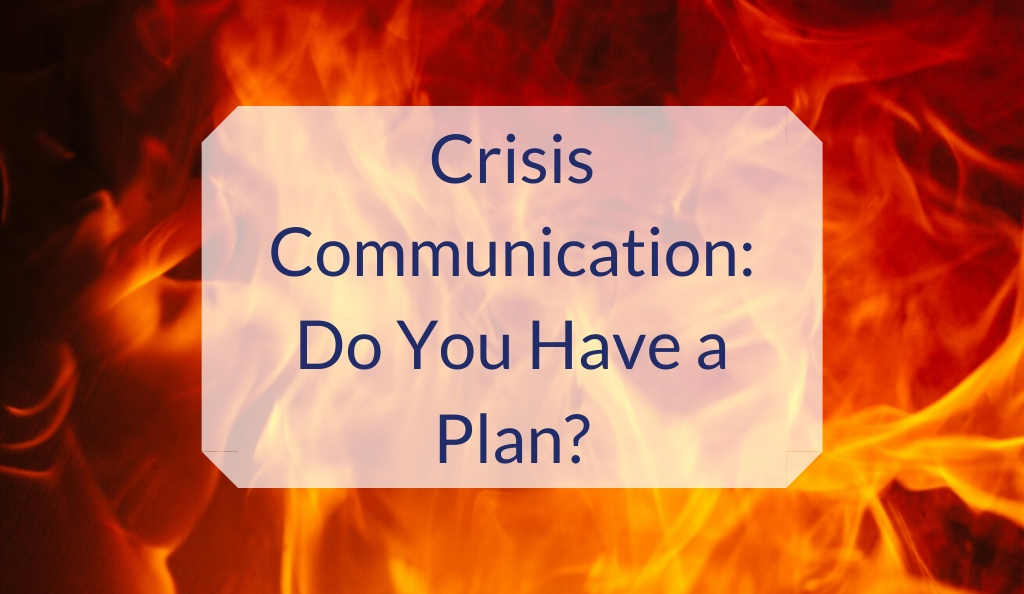
Written by Paige Dawson
Your business probably has a disaster recovery plan in place for your IT network—in the event of a power outage or natural disaster there is a documented process for preserving your data and getting your team up and running fast. But what if something else dramatic and unexpected happens to your business? It could be a data breach, an on-the-job accident, a lawsuit, etc. Whatever the incident or issue might be, your company’s reputation will be on the line. Are you prepared to respond quickly, appropriately and comprehensively?
At MPD, we’re all about helping you tell your story. But if you aren’t prepared for a crisis, someone else might take control of the narrative: reporters, Twitter users, disgruntled clients, etc. While none of us like to think about something negative happening to our business, it’s important to have a plan in place.
When a crisis hits, minutes matter. With the internet, social media and an insatiable 24/7/365 news cycle, your stakeholders are likely to hear about your crisis from some source very quickly. It’s your job to make sure they hear from you first or that you are included in the conversation.
You may recall some of these famous public relations blunders of recent years, but crisis communication readiness isn’t just for big corporations and airlines. Every organization has a reputation to protect. A carefully crafted crisis PR plan can help you preserve the precious trust of your clients, employees and stakeholders and save you a lot of stress when the unexpected happens.
Every company’s needs are a bit different, but putting together a basic crisis communications plan should include the following key steps:
Brainstorm possible scenarios. Think through the most likely scenarios that could occur. For example, we’ve worked with clients in the heavy industry field who needed to plan for transportation accidents, employee injuries and other possible emergencies. Anticipate the most common potential issues and incidents that could impact your business and don’t forget things that could strike at any business at any time such as harassment charges, data breaches, etc.
Establish a communications team and roles. Determine exactly who will be part of the crisis response team and how you will communicate to your various stakeholders (employees, clients, investors, the media, etc.) Designate a spokesperson who will be the single source to field questions from reporters and issue statements.
Develop draft statements and templates. When a crisis hits, you don’t want to waste time trying to wordsmith appropriate language or create key communication documents from scratch. Draft some basic templates for your likely scenarios that can be quickly customized to suit the situation. This includes internal memos to employees reminding them to direct all media inquiries to the designated spokesperson. Be sure to create a general acknowledgement statement that can be used almost immediately after a crisis hits. Even if you are still gathering details on what happened and can’t say much, it’s important to quickly acknowledge the situation and advise the media and public on exactly how you will be communicating with them going forward.
Determine monitoring methods. If you don’t already have social media listening tools and Google alerts in place for your company, consider setting those up now. These tools are very helpful for monitoring your brand’s reputation on a daily basis, but during a crisis they’re essential: you’ll want to know what social media conversations, articles and news stories include your company so you can quickly respond and clear up any misinformation before it spreads.
The first thing many people do in a crisis is avoid the media or respond simply with “no comment.” However, this approach is counter-productive. Responding to a crisis can be a balancing act between not over-reacting and not under-reacting. The public wants information, so it’s our role to ensure we share appropriate, approved communication to ensure an accurate and compassionate story is told. If we don’t speak, someone else will. The key is to share enough to be responsive without oversharing.
We’ve helped countless client both prepare for and effectively respond to crisis situations. From data centers and transportation companies to software-as-a-service and retail stores, we’ve crafted messages to give a baseline and breathing room as our clients sort out crisis situations. Our founder Paige Dawson got her start in crisis communications 25 years ago—calming the waters for everything from insurance litigation to couture clothing, and it’s an area we offer as a specialty still today.
While we always hope that the plans and templates we create for crisis PR never get used, we’re very grateful for our clients who take took the precaution to plan ahead just in case. It’s smart business, and we’re able to create more thoughtful and cost-effective communication tools before a crisis than amid the chaos of a current crisis.
If you want to learn more about crisis communications or need help putting a plan in place, please contact us.